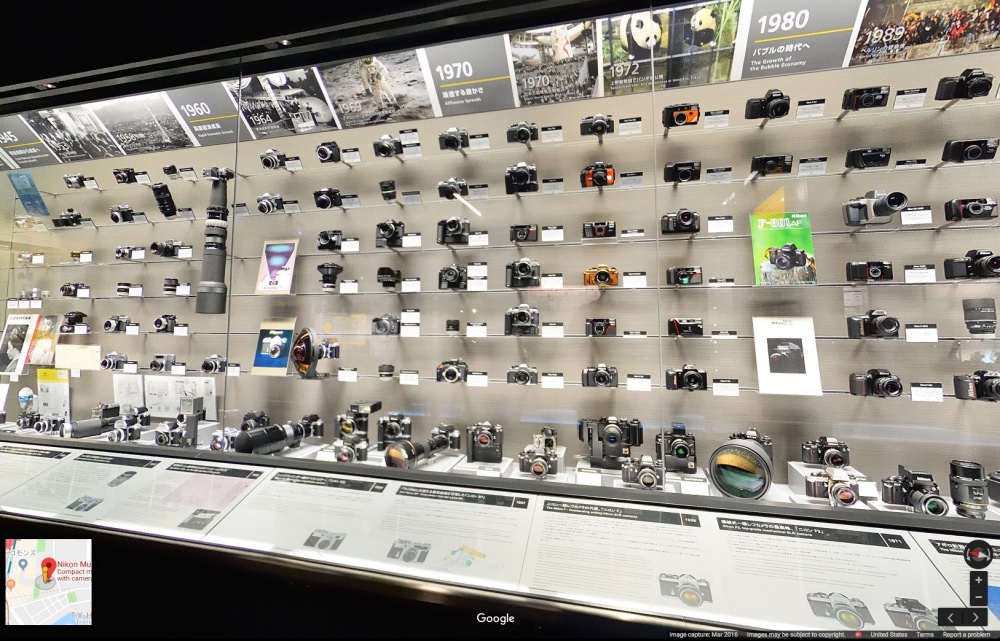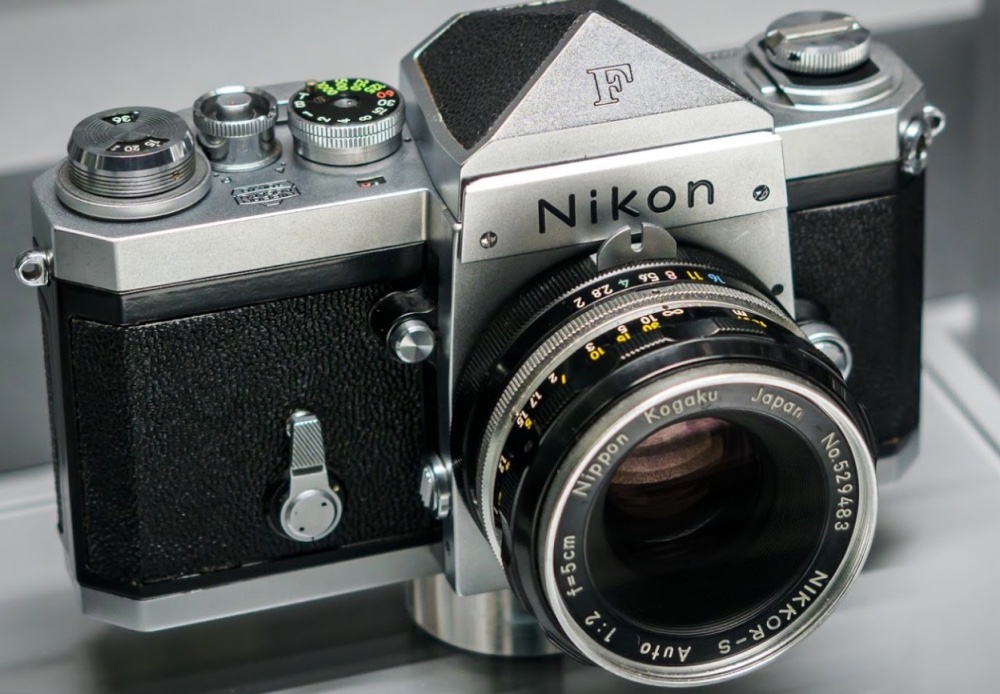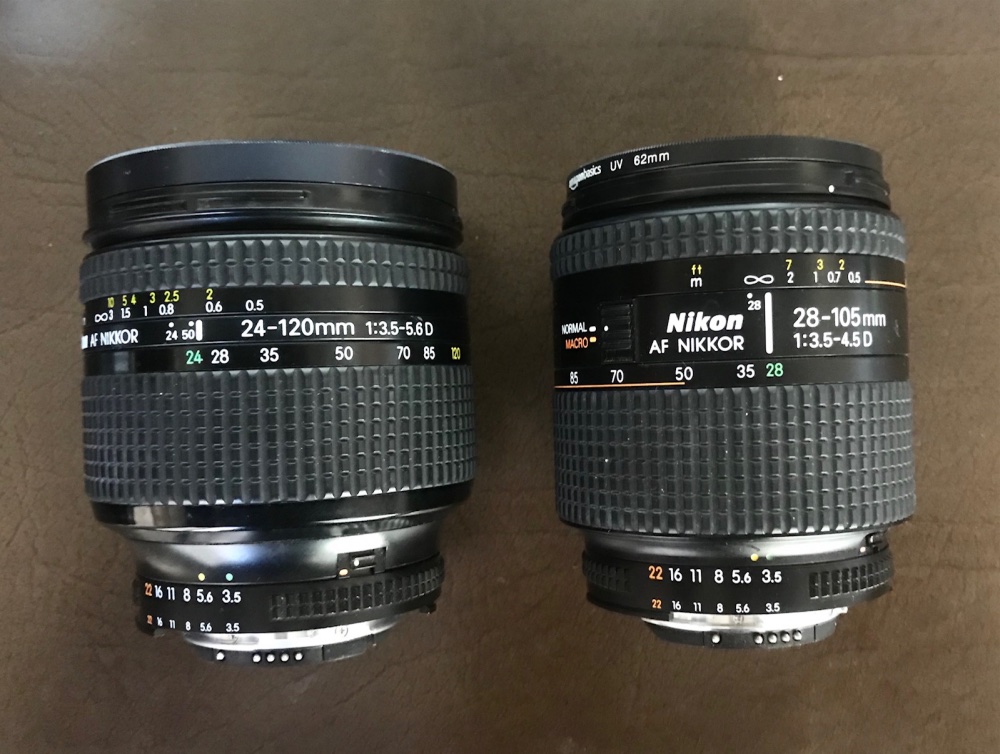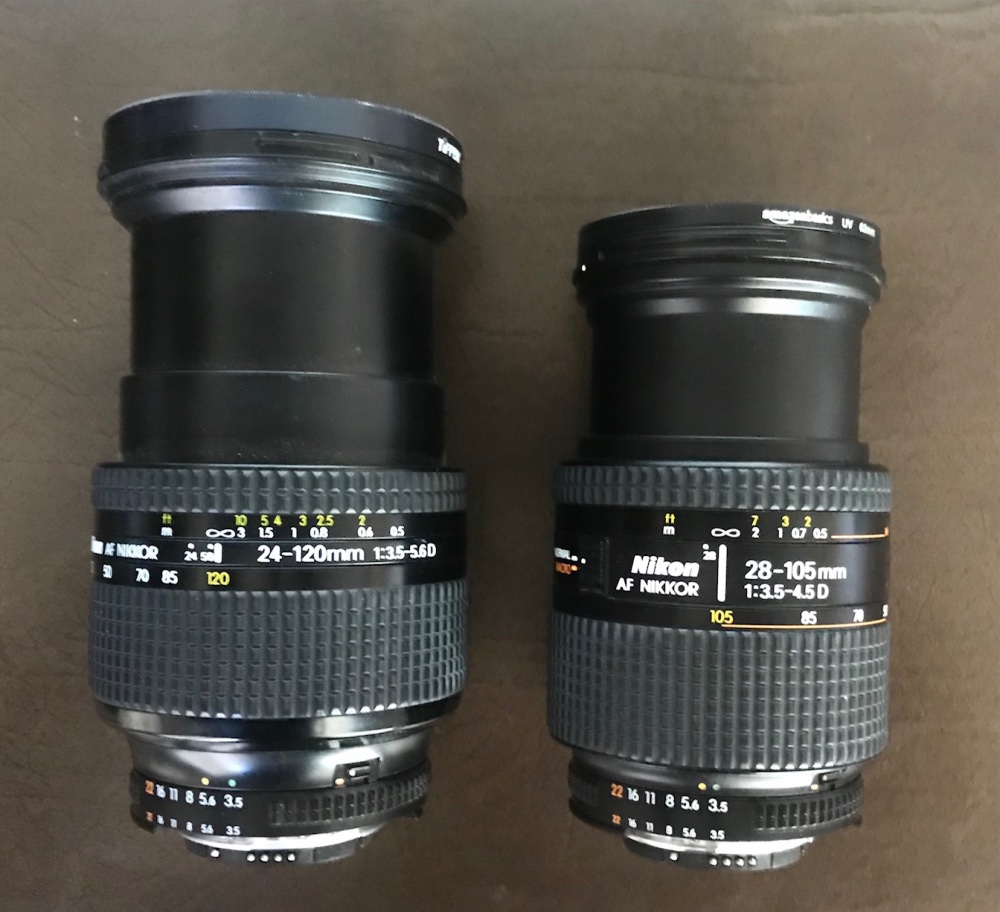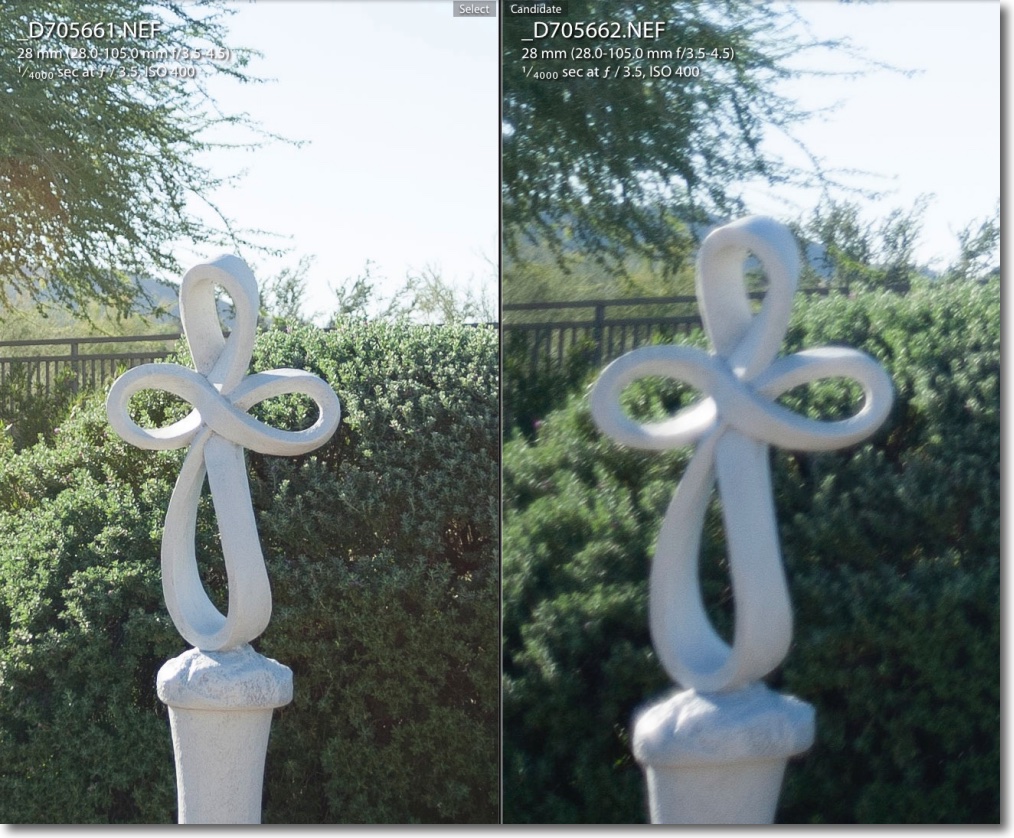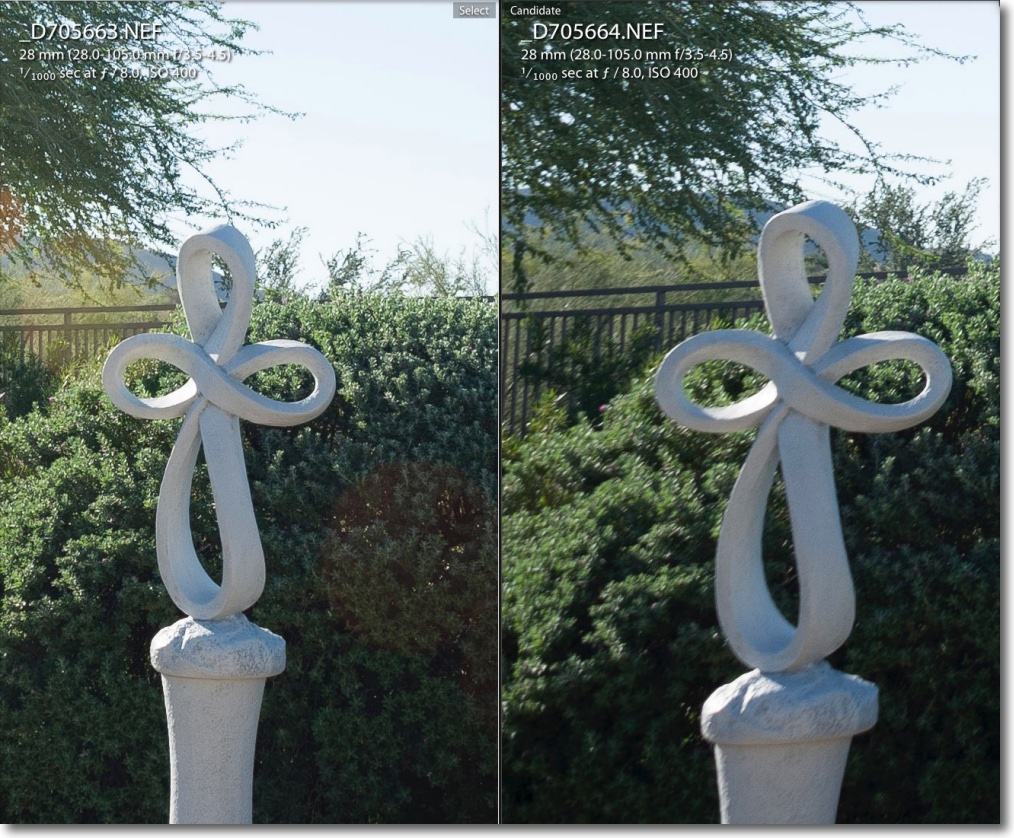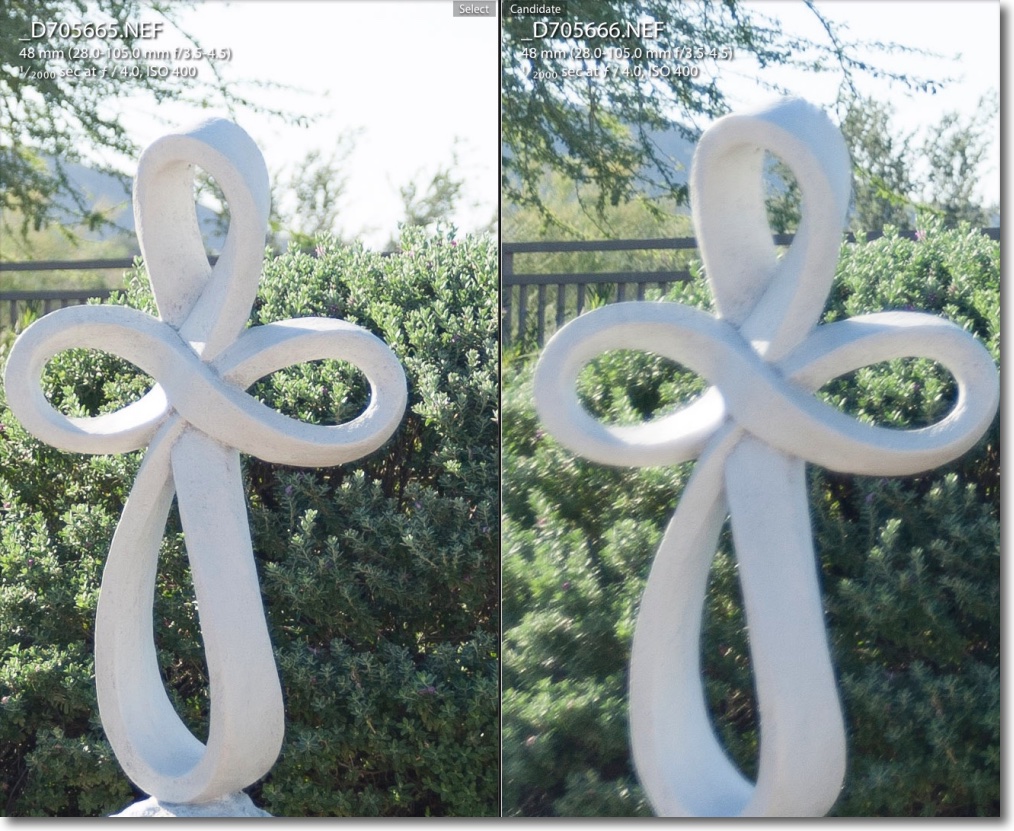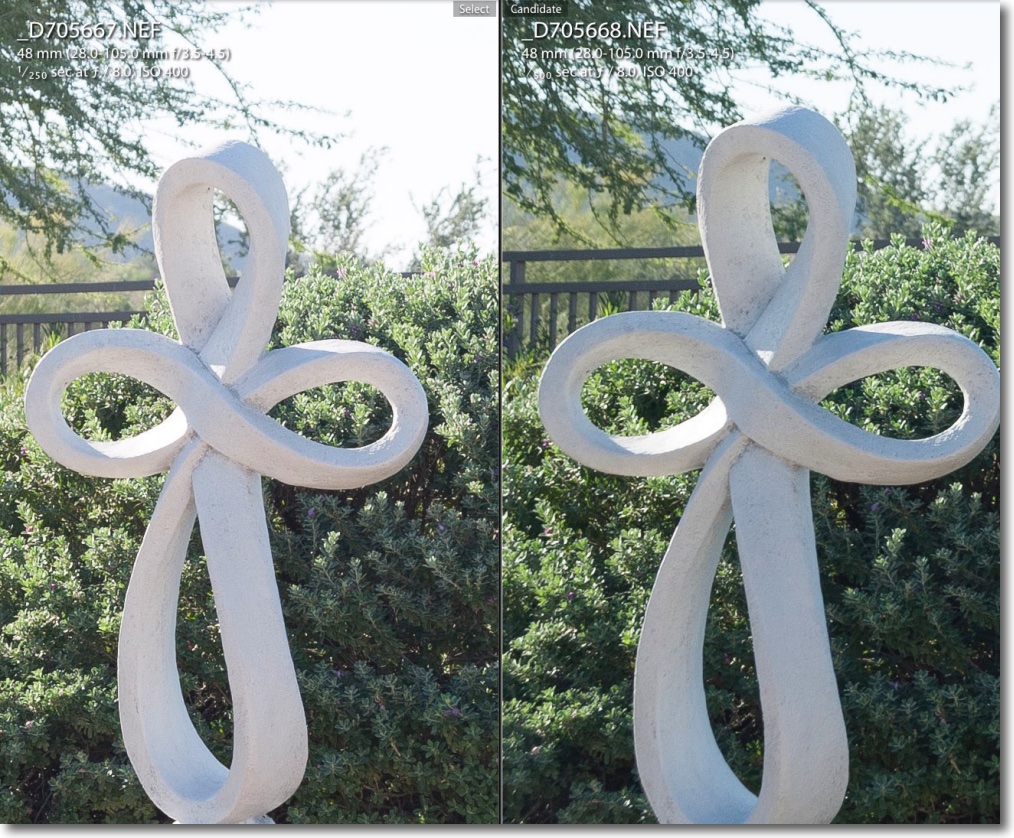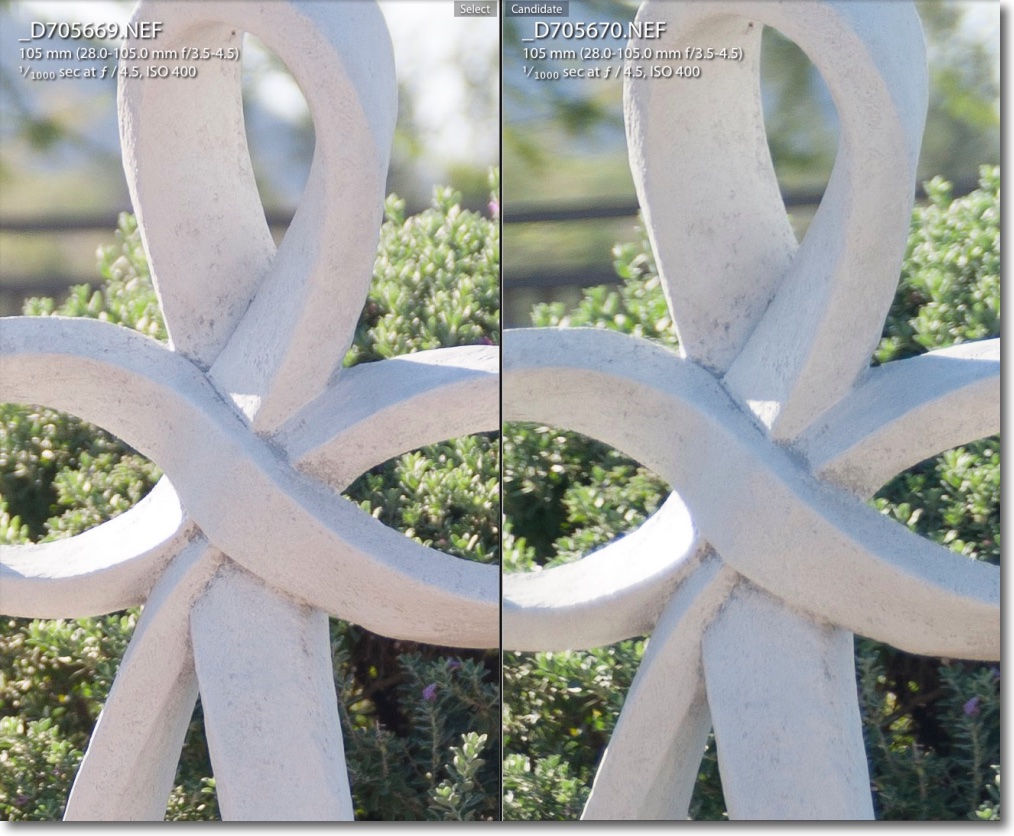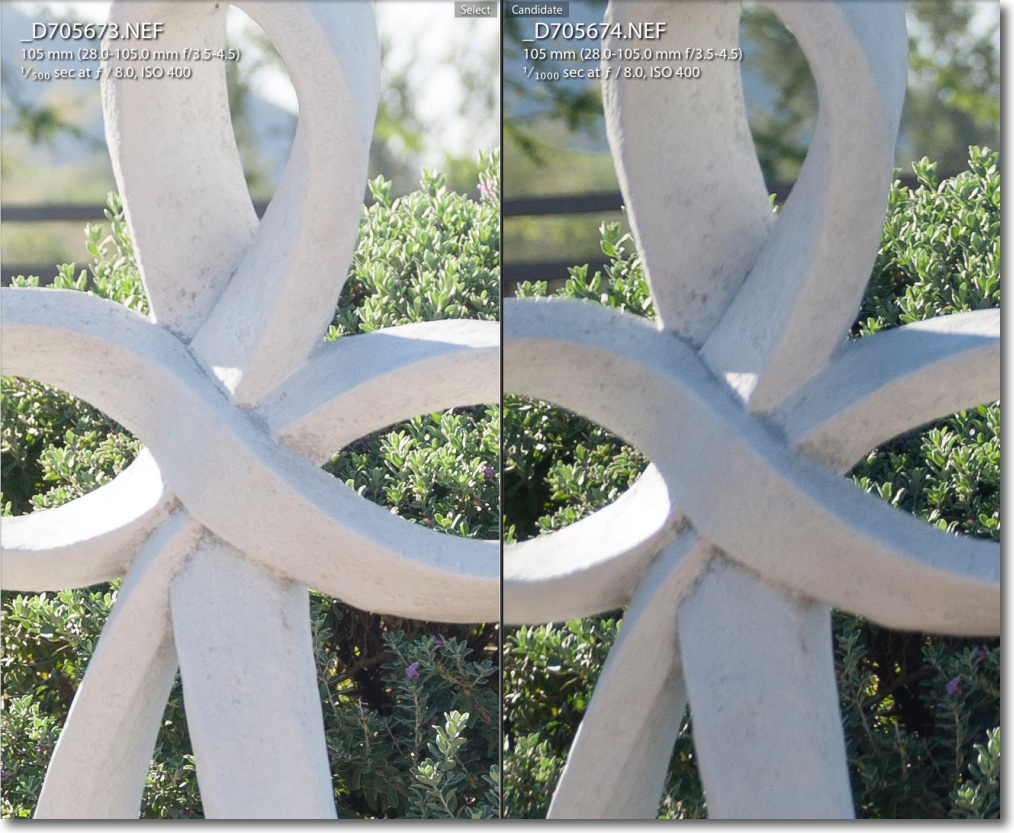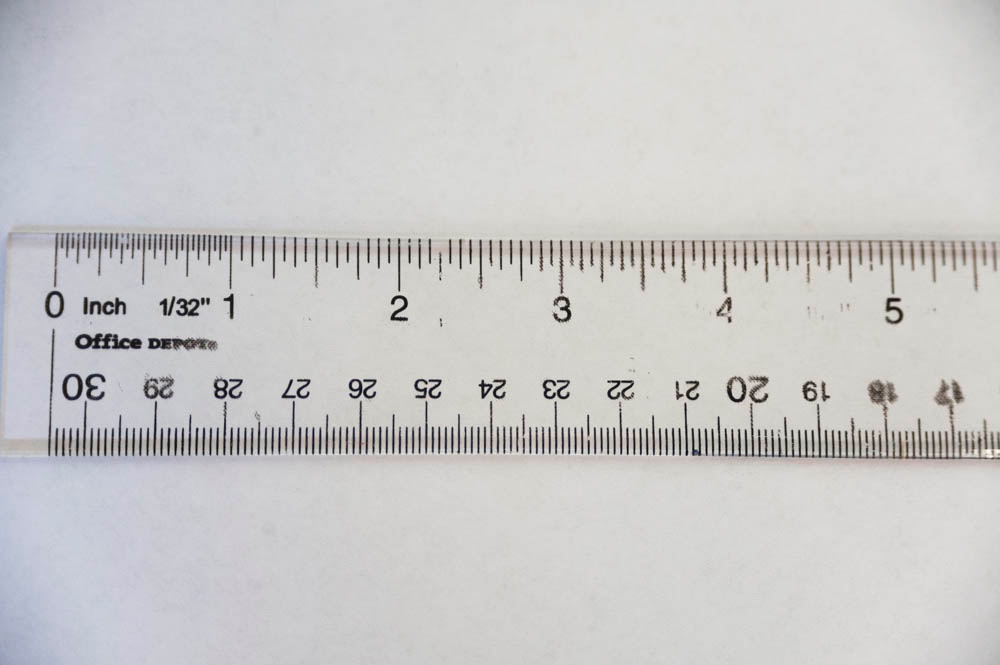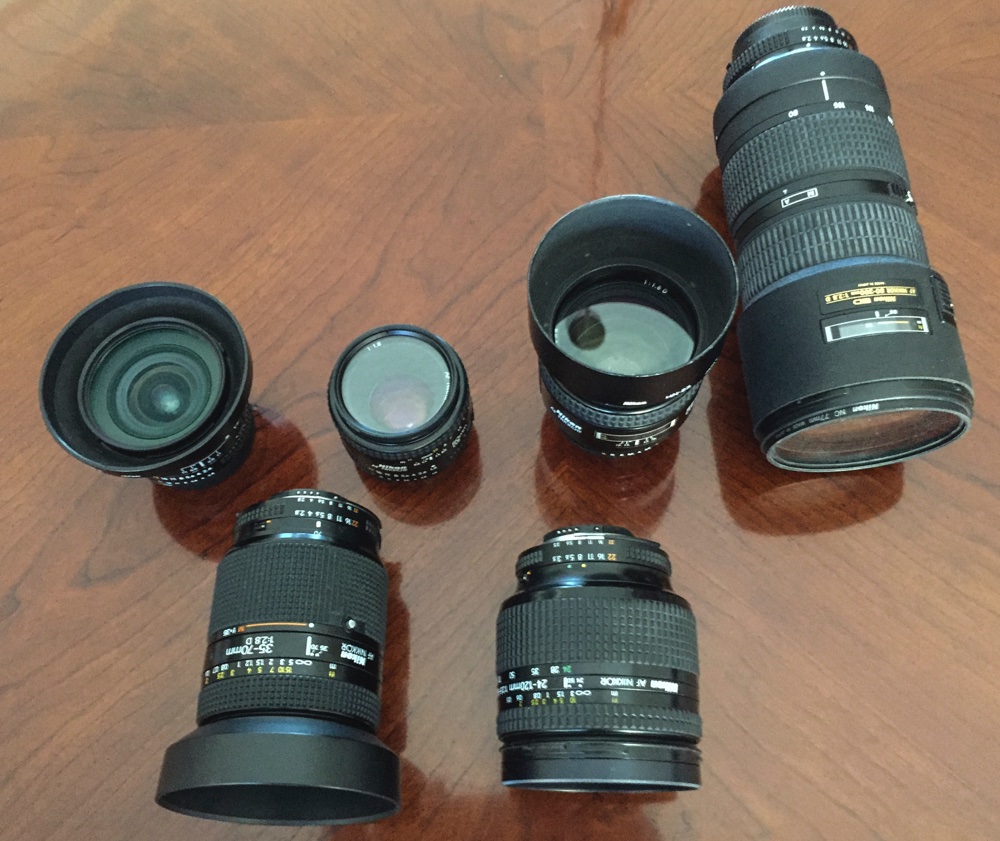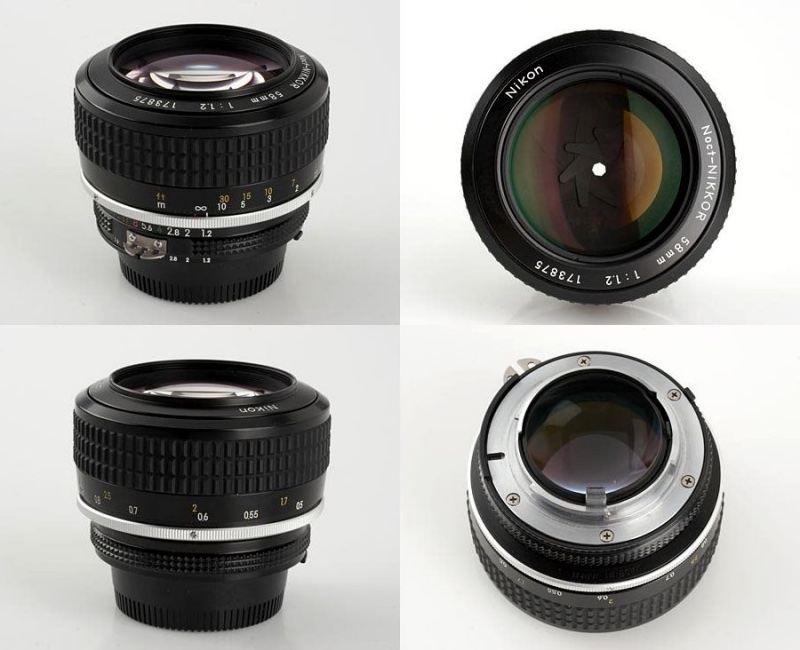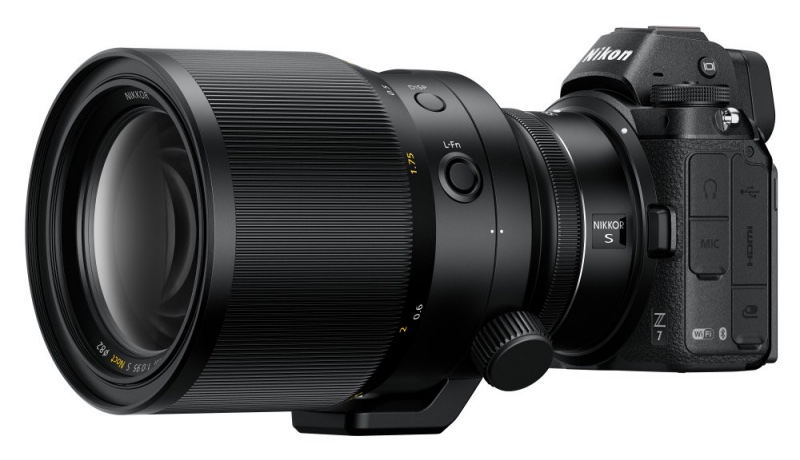OK, with some reservations.
The 24-120mm Zoom Nikkor was made from 1996 through 2002. Many regard it as the worst AFD zoom, in much the way the 43-86mm Nikkor is similarly damned in the MF era.
My copy of the 43-86mm zoom shows that, in its Mark II version, the lens is a capable performer, and a lovely compact package on a smaller film camera body.
By contrast, the 24-120mm, with its high 5:1 zoom range, comes with more design compromises. For one, the lens is not constant aperture, the speed falling to f/5.6 at the long end. Second, there is considerable weakness in the edges at 24mm with poor definition and chromatic aberration aplenty. The optic also comes with a reputation for sample variation and the plastic content means there’s a bit of wobble in the extended part of the lens at longer focal lengths.
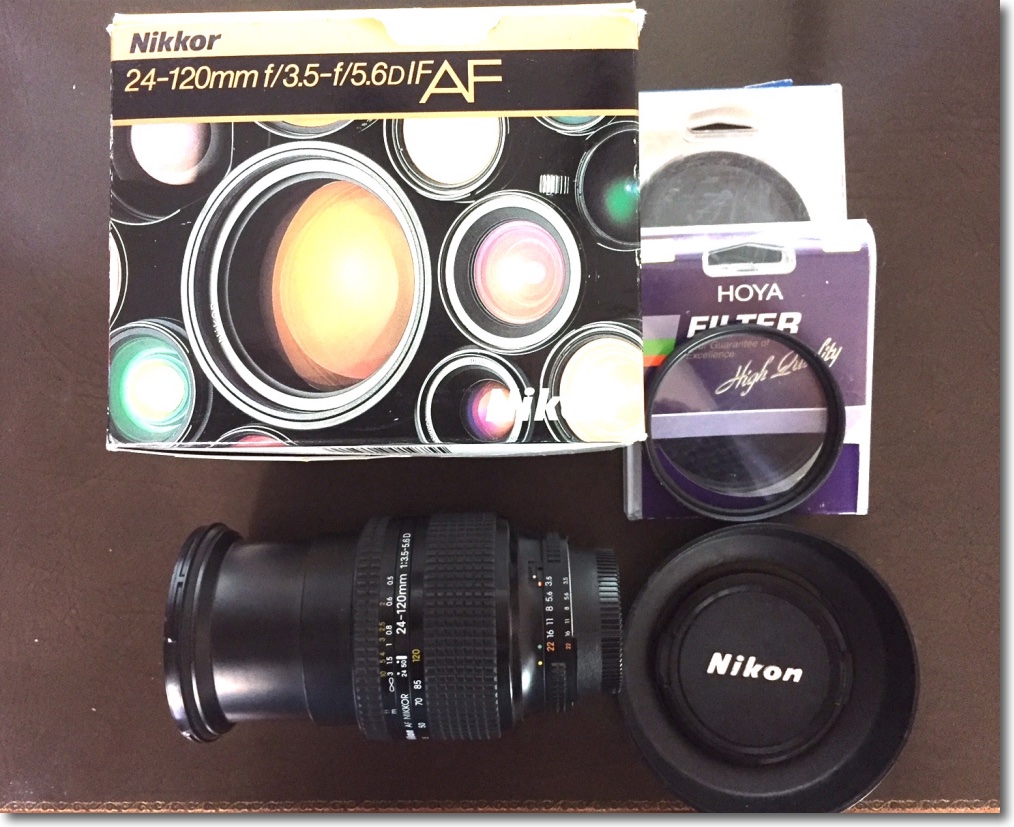
Shown here at 120mm, fully extended. The lens hood is as useless as these things get.
Then again, mine came mint, boxed, with caps, hood and no fewer than three 72mm filters – UV, IR (!) and ND. Quite why you would want an ND filter with a lens that is already natively slow beats me, but whatever. And the price of entry – and proceeds of exit if it’s not for you – was a very modest $83 shipped. After selling the useless IR and ND filters, my cost was $17!
At 24mm the lens is compact and the zoom action is by a rotating collar rather than trombone action, meaning the lens ages well with none of the slop common in well used push-pull zooms. You can compare sizes with the 85mm f/1.8 AFD, a decidedly superior optic, in this image:
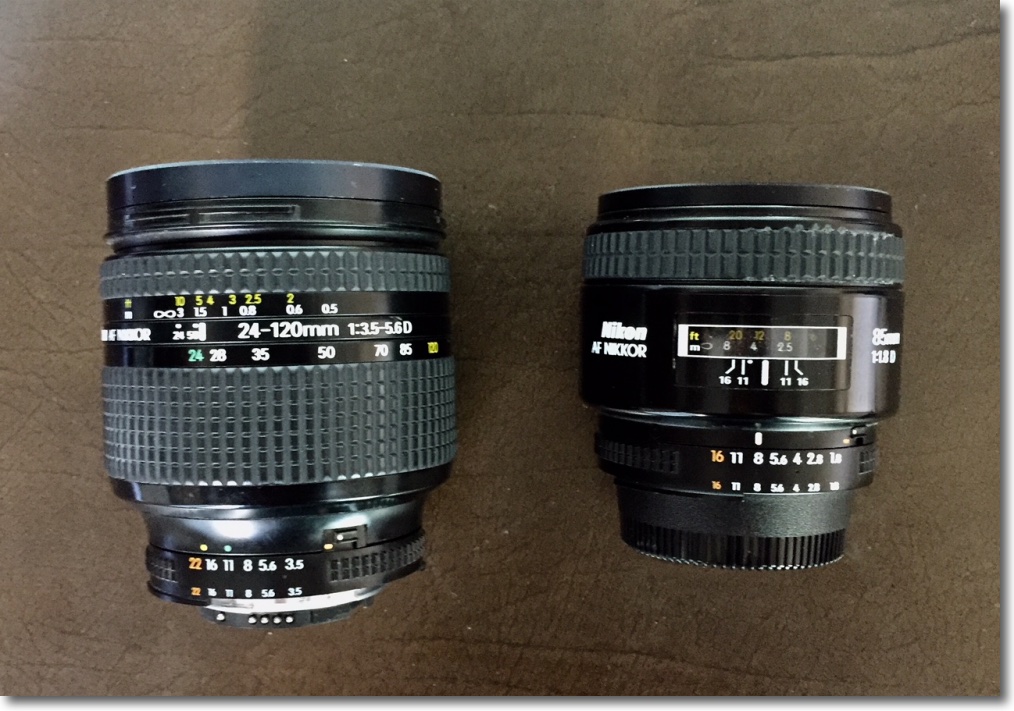
The zoom is at 24mm. Note the dual aperture indexes – blue at 24mm, yellow at 120mm.
The good news here is that the lens is very sharp in the center at all apertures, with negligible chromatic aberration. AF is satisfyingly fast and very welcome given the lens’s small maximum apertures. There is fairly pronounced vignetting in the corners at anything below 50mm but that is easily corrected using Adobe’s lens correction profile in LR. At the edges the story is different. I’m reproducing extreme corner test images here as the center ones are so good. In all cases the lens correction profile was applied. These are 40x enlargements:

At 24mm, f/3.5 and f/8.
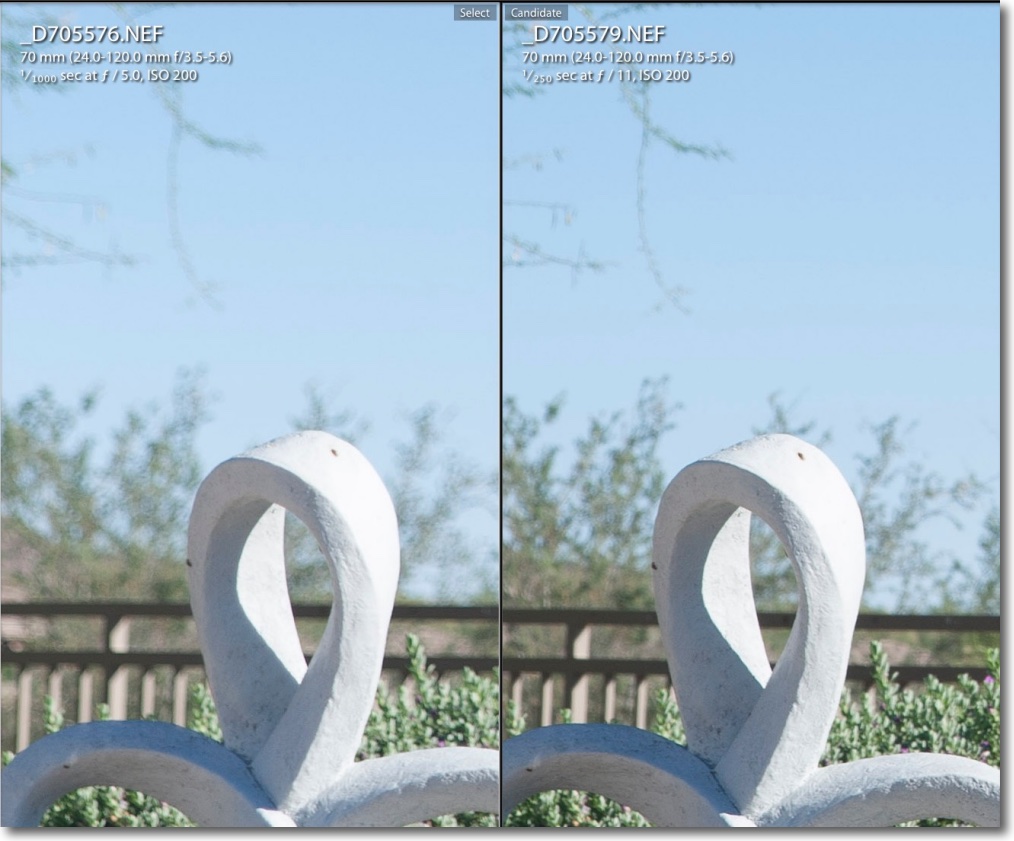
At 70mm, f/5 (fully open) and f/11.
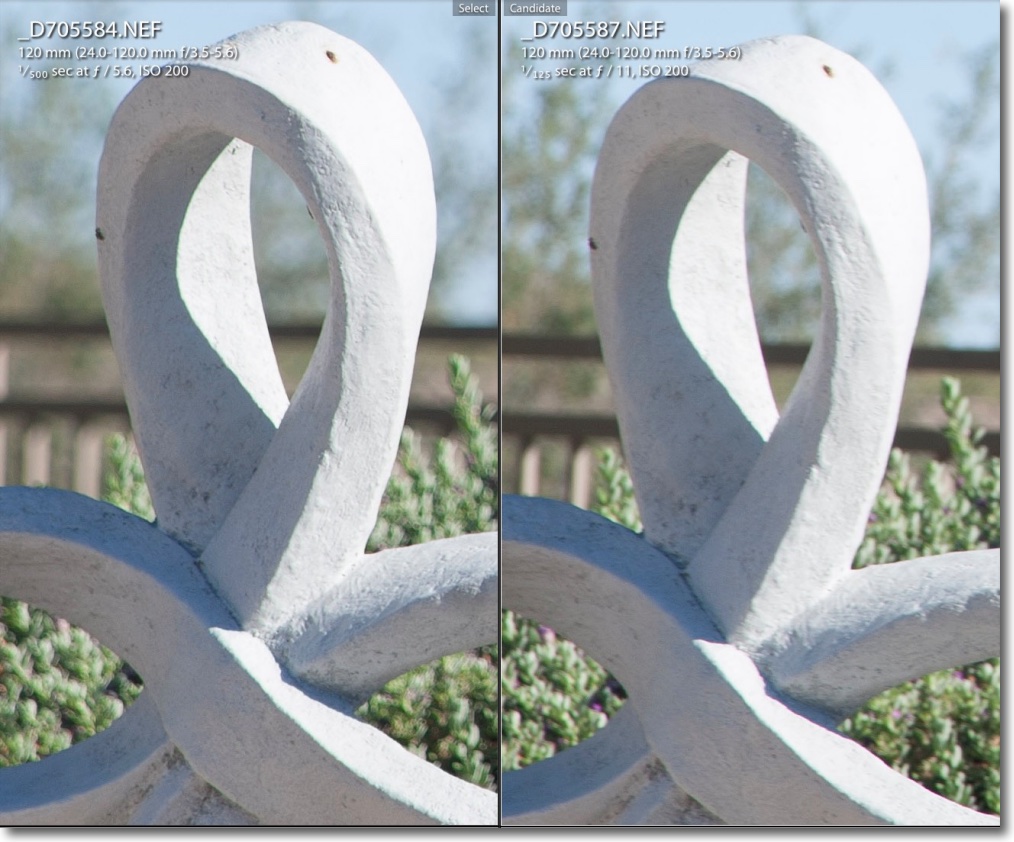
At 120mm, f/5.6 (fully open) and f/11.
As Adobe does not include a profile for this optic with LR, I used that for the later VR version and it works well:
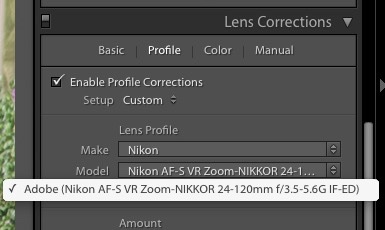
Lens correction profile applied in Lightroom.
At 24mm the extreme corners really suffer at full aperture, only coming into their own at f/11. At medium and long settings things are much better, as disclosed above.
Handling of out of focus areas is rather so-so, if not awful, at the long end using wider apertures. (At the short end it’s tough to get anything out of focus). See above.
So your under $100 investment gets you a lens with a wide zoom range, decent performance at most settings except at full aperture at the wide and, and so-so out of focus handling. But if you want to carry just one wide-range zoom for outdoor snaps, the 24-120mm AFD Nikkor checks many boxes. Use with a polarizing filter is tricky as the front element rotates some 30 degrees through the zoom range. Adjust the filter once the focal length is set.
Comparing the results with images from the Canon 5D using the 24-105mm L auto kit kens, the Canon shows even greater barrel distortion at 24mm and poor corner definition and chromatic aberration in the corners fully open. The Canon is larger and heavier, owing to its constant aperture design and is generally a stop or two sharper than the Nikon. It also costs a lot more.
For a comparison with the Nikkor 28-105mm f/3.5-4.5 AF D lens, click here.
